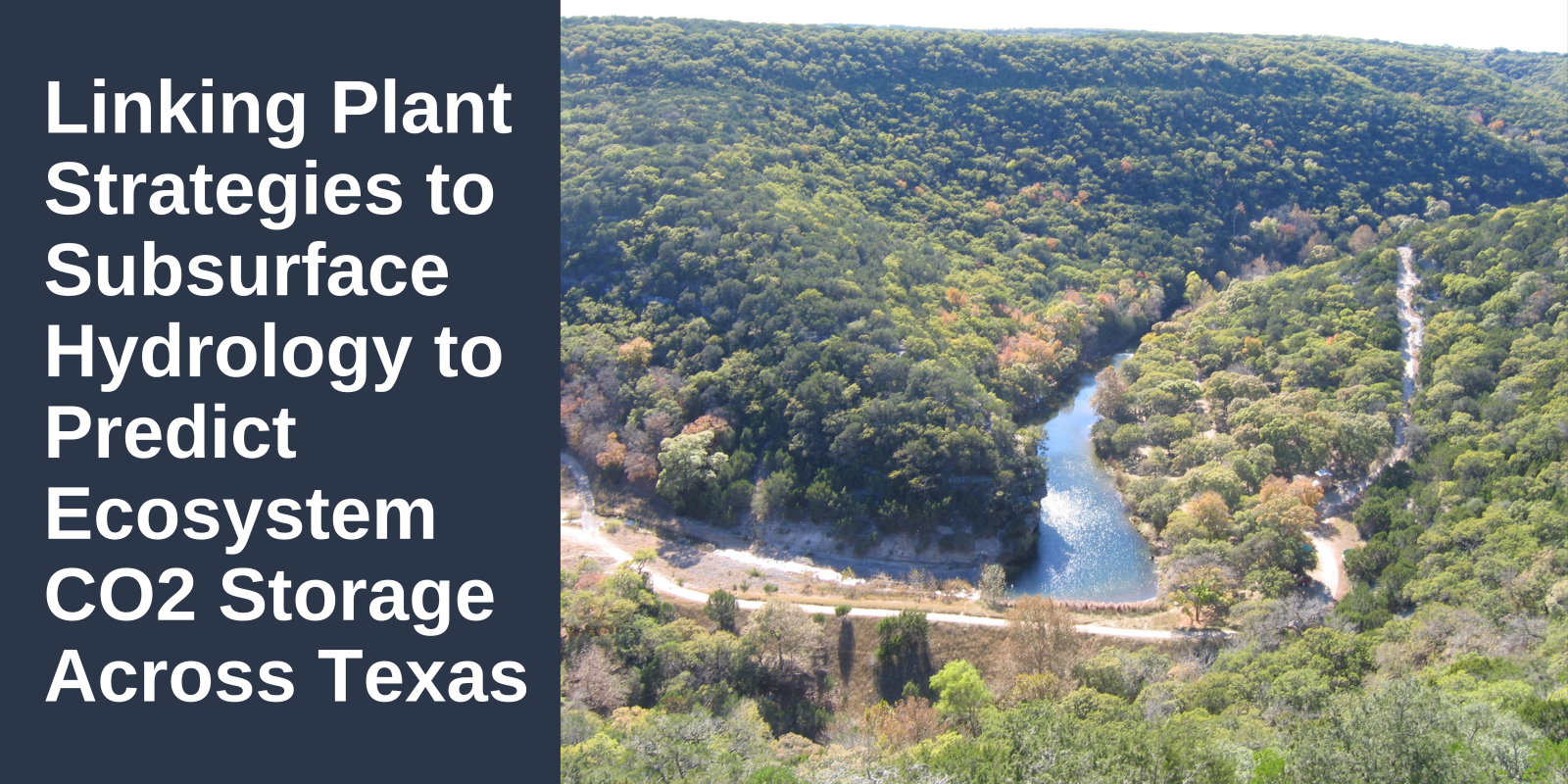
The Edwards plateau stretches across central Texas. It is a dry and rocky place often with little soil for plants to grow. Yet, here we can see amazing strategies for trees growing deep in the rocky subsurface, somehow collecting enough water and nutrients to grow. As ecologists, we often work in places with simple below-ground structure to test predictions of plant strategies based on idealized conditions. And as geoscientists, we often ignore potential feedback between subsurface geology and plant strategies. This project brings together ecologists and geoscientists to better understand these fascinating ecosystems, their resilience to changing climates and their current and future potential contributions to the global carbon cycle. The project includes: detailed measurements of the subsurface fluxes of carbon and water coupled with aboveground vegetation and flux measurements at a single site, theoretical research to guide our understanding of the plant strategies and feedbacks to geology, and the analysis of large-scale observational data from forest plots across Texas. With this research, we cross disciplinary boundaries and seek answers that apply to both Texas and more generally to the role of the land surface in the global carbon cycle.

